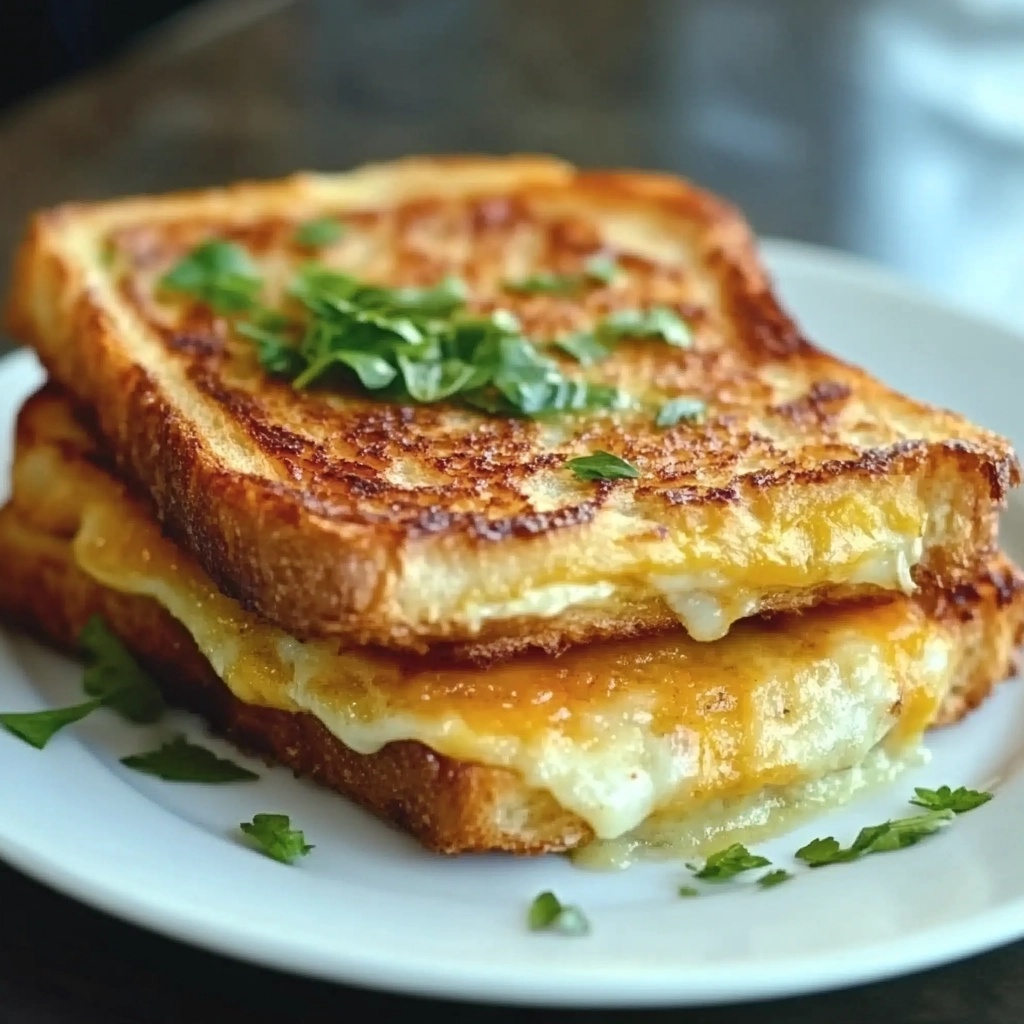France is known globally for its culinary sophistication, but it’s often the simplest dishes that become the most beloved. One of the cornerstones of French café culture is the art of the sandwich—elevated, comforting, and unmistakably European. At the heart of this tradition are the Croque Monsieur and Croque Madame, two iconic French sandwiches that combine indulgence with elegance.
The charm of French cafés lies in their ability to serve food that feels both rustic and refined. Whether nestled on a quiet Parisian street or a bustling boulevard, these establishments often feature menu staples like pain au chocolat, quiche Lorraine, and of course, Croque Monsieur. The croque sandwiches are especially adored for their perfect balance of textures: crisp bread, melted Gruyère cheese, salty ham, and the creamy richness of béchamel sauce.
These sandwiches aren’t just delicious—they’re cultural. They reflect the long-standing tradition of French cuisine emphasizing simple ingredients prepared with care. The Croque Monsieur, which literally means “crunchy mister,” has appeared in literature and art, including the works of Marcel Proust, linking it deeply to French identity and storytelling.
For those unfamiliar, béchamel is one of the mother sauces of French cooking, forming the base of many classic recipes. Its history can be traced through traditional French cuisine, and it’s this sauce that transforms an ordinary ham-and-cheese sandwich into something special. For many, the Croque Madame—the version topped with a perfectly cooked egg—has become a brunch essential, offering a more indulgent alternative to dishes like Eggs Benedict.
Today, these sandwiches have taken on new life internationally, popping up in modern brunch menus, Instagrammable café settings, and food blogs alike. Creative spins on the classics are abundant on Pinterest boards filled with French brunch recipes and classic café dishes. Whether you’re a food enthusiast or simply someone looking to recreate a little taste of France at home, Croque Monsieur and Croque Madame are must-try sandwiches that deliver every time
What is a Croque Monsieur?
The Croque Monsieur is the epitome of French comfort food—a toasted ham and cheese sandwich that’s as simple as it is indulgent. Its name comes from the French verb croquer, meaning “to crunch,” and monsieur, meaning “mister.” When translated literally, it becomes “Mr. Crunch,” a fitting description for a sandwich defined by its golden, crisp crust and gooey interior.
At its core, a Croque Monsieur consists of:
-
Two slices of white or sourdough bread
-
A generous smear of Dijon mustard
-
Thinly sliced ham (traditionally Parisian ham, though many use chicken ham)
-
Melted Gruyère or Emmental cheese
-
A luscious layer of béchamel sauce
Unlike a typical grilled cheese, the Croque Monsieur is elevated by the use of béchamel—one of the five mother sauces of French cuisine. This creamy white sauce gives the sandwich a luxurious mouthfeel, enhancing the flavor of the cheese and binding everything together.
The bread is either pan-toasted in butter or baked and broiled in the oven, giving it that signature crunch. After baking, it’s often topped with an additional layer of grated cheese or sauce before being broiled until bubbly and golden—a finishing step that defines its texture and visual appeal. Techniques for achieving the perfect melt and toast are widely shared on platforms like Pinterest where food enthusiasts showcase their takes on the perfect Croque Monsieur.
Beyond its irresistible flavor, the Croque Monsieur carries a storied legacy in French culture. It was first spotted on menus in early 20th-century Paris cafés and quickly gained traction as a go-to lunchtime meal. Its accessibility—both in terms of ingredients and preparation—allowed it to become a beloved staple across all social classes.
While many international adaptations exist, the essence of the dish remains unchanged. Whether served in a humble brasserie or featured in a gourmet bistro, the Croque Monsieur continues to be a celebrated example of how traditional French recipes can transform the everyday into the exceptional.
For home cooks eager to try it, using the right cheese is crucial. Gruyère is often preferred for its nutty depth and ideal melting quality. Some may opt for Swiss cheese as a substitute, which is widely available and provides a similar texture.
As interest in classic café recipes grows, this sandwich remains a standout favorite. On Pinterest boards, variations and tips abound, making it easy to explore different spins while staying true to the original French roots.

What is a Croque Madame?
The Croque Madame is the richer, more decadent sibling of the Croque Monsieur. It includes all the same core ingredients—bread, ham, cheese, and béchamel sauce—but with one notable addition: a perfectly cooked egg on top. This small yet impactful detail turns a comforting sandwich into a brunch-worthy masterpiece.
The egg, usually fried sunny-side up, adds a silky layer of flavor and visual appeal. As you cut into the sandwich, the runny yolk blends with the béchamel and melted cheese, creating a luxurious, saucy bite. The Croque Madame not only satisfies hunger but feels like an experience—one that brings together texture, temperature, and taste in perfect harmony.
This sandwich gets its name in a whimsical way. According to culinary lore, the fried egg on top was thought to resemble a woman’s hat, giving rise to the name “Madame.” While the Croque Monsieur translates to “Mister Crunch,” the Croque Madame became the “Lady Crunch,” an endearing distinction that captures the French flair for combining language and cuisine.
What sets this sandwich apart even more is its rising popularity on brunch menus worldwide. Restaurants and home cooks alike have embraced it as an upscale alternative to dishes like Eggs Benedict. You’ll find thousands of interpretations shared on visual platforms like Pinterest, where food lovers add twists such as truffle oil, smoked salmon, or even avocado slices.
The Croque Madame is often served with:
-
A light mixed greens salad with a vinaigrette
-
Crispy pommes frites
-
A glass of French wine or sparkling water
Its rise in popularity outside France speaks to the sandwich’s versatility and global appeal. In American cafés, it’s not unusual to see a Croque Madame made with brioche bread or served with a side of roasted potatoes. On food boards like Pinterest’s French brunch ideas, modern takes incorporate ingredients like spinach, goat cheese, or hot honey for a sweet-savory twist.
Whether you stick to the traditional recipe or explore creative variations, the Croque Madame is a delicious way to bring a bit of Paris to your table.
Historical Background of the Sandwiches
The story of the Croque Monsieur begins in early 20th-century Paris, a city known as much for its culinary legacy as its literary one. The sandwich made its first documented appearance in 1910, reportedly served at a café on the Boulevard des Capucines. At a time when Parisians sought quick, satisfying meals that didn’t compromise on quality, the Croque Monsieur became an instant favorite.
Its simplicity and flavor quickly caught on. By 1918, the sandwich had been immortalized in French literature, appearing in In Search of Lost Time by Marcel Proust. This literary nod elevated the dish from street food to cultural icon, further rooting it in French identity. As French cuisine grew in popularity globally, the Croque Monsieur came to symbolize not just Parisian café life, but the wider values of French cooking—elegant, efficient, and flavorful.
The Croque Madame followed closely behind. While the exact date of its creation isn’t confirmed, it became popular in the 1920s, a period of culinary creativity in France. The addition of a fried egg on top wasn’t just a garnish—it was a stroke of brilliance that turned a light lunch into a more indulgent meal, perfect for the growing brunch culture in post-war France.
As these sandwiches became café staples, their recipes were passed down and adapted. They moved from brasseries to home kitchens, eventually becoming part of school lunches, tourist menus, and even fine-dining reinterpretations. Food creators and culinary historians alike continue to explore their evolution, often sharing these insights on Pinterest boards dedicated to French sandwiches.
Over time, the Croque Monsieur and Croque Madame have also inspired regional variations:
-
Croque Provençal – includes sliced tomato
-
Croque Norvégien – made with smoked salmon instead of ham
-
Vegetarian Croque – uses grilled vegetables or mushrooms in place of meat
These variations have helped the sandwiches stay relevant in a modern context, appealing to diverse dietary preferences. From their roots in Parisian cafés to their current global presence, the Croque Monsieur and Croque Madame remain timeless symbols of French comfort food.
Why Béchamel Sauce is the Secret Weapon
One of the defining features that sets the Croque Monsieur and Croque Madame apart from other toasted sandwiches is the rich and velvety béchamel sauce. A cornerstone of classic French cuisine, this white sauce is made with a simple base of butter, flour, and milk, but its impact on flavor and texture is profound.
In a Croque sandwich, béchamel acts as a creamy glue that holds the layers together. It also enhances the flavor of the cheese, creating a silky texture that pairs beautifully with the crisp edges of the toasted bread. A well-made béchamel transforms what could be a simple ham and cheese sandwich into a luxurious, café-worthy dish.
Many home cooks add grated cheese to the béchamel, turning it into a Mornay sauce, which adds an extra layer of depth and richness. This technique is widely shared on recipe-focused platforms like Pinterest, where food creators offer tips on thickening, seasoning, and customizing the sauce.
In traditional French culinary education, béchamel is considered one of the five “mother sauces”, serving as the base for countless dishes. Its versatility and balance of flavor make it the secret behind many beloved French comfort foods—from lasagna to gratins.
When preparing your own Croque Monsieur or Croque Madame, a smooth, lump-free béchamel can elevate your sandwich from average to extraordinary. Pro tips include:
-
Whisk continuously while adding milk to avoid lumps
-
Use whole milk for a richer texture
-
Add a pinch of nutmeg and black pepper for subtle depth
Ultimately, the béchamel is what makes the difference—it’s what gives a Croque its unmistakable French character.

Croque Monsieur vs. Croque Madame: Key Differences
Although they share a foundation, the Croque Monsieur and Croque Madame diverge in a few distinct and delicious ways. Here’s how they compare:
| Feature | Croque Monsieur | Croque Madame |
|---|---|---|
| Topping | None | Fried egg (or poached) |
| Texture | Crispy and gooey | Creamy, runny, rich |
| Serving Style | Often handheld | Usually eaten with cutlery |
| Ideal For | Lunch or light dinner | Brunch or indulgent lunch |
| Caloric Density | Lower | Higher due to egg yolk |
The addition of the egg in a Croque Madame adds creaminess and visual appeal, turning the sandwich into more of a plated dish. It’s common to see a Madame version served with a mixed greens salad, especially in modern cafés and brunch spots. You’ll find visual guides and adaptations of both sandwiches on Pinterest, where food lovers share creative upgrades.
While the Croque Monsieur is often quicker and easier to make, the Croque Madame has the visual drama and richness that makes it a favorite for brunch menus and special occasions.
Popularity Outside France
Though deeply rooted in French café culture, the Croque Monsieur and Croque Madame have spread far beyond Paris, becoming favorites in brunch cafés, bistros, and even home kitchens across the globe.
In the United States, for example, the Croque Madame has found a place alongside Eggs Benedict and avocado toast on upscale brunch menus. In Japan, the sandwich is commonly adapted with a local twist—like using Japanese milk bread (shokupan) and serving it as part of a Western-style breakfast set. Recipes for these adaptations are often showcased on curated Pinterest boards, emphasizing the sandwich’s global versatility.
The sandwich’s international appeal can be attributed to:
-
Its familiar ingredients (bread, ham, cheese, egg)
-
Its easy customization for dietary preferences
-
The universal comfort of a warm, toasted sandwich
Even in vegetarian and pescatarian adaptations, the Croque spirit remains—elevated, satisfying, and unmistakably European. On Wikipedia, sourdough bread is often recommended for its structure and tang, especially when adapting the recipe for different regions and flavor profiles.

FAQs
What’s the difference between Croque Madame and Eggs Benedict?
While both are popular brunch dishes, Croque Madame is a toasted sandwich with ham, cheese, béchamel, and a fried egg. Eggs Benedict features poached eggs on English muffins with hollandaise and usually Canadian bacon.
Can you freeze Croque Monsieur or Croque Madame?
Yes, you can freeze the assembled sandwiches before baking. For best results, store them without the béchamel or egg, then add fresh toppings after thawing.
What’s the best cheese for Croque Monsieur?
Gruyère cheese is ideal due to its nutty flavor and superior melt. Swiss cheese or Emmental are excellent substitutes.
Why is it called Croque Madame?
The fried egg on top resembles a woman’s hat from early 20th-century fashion, which inspired the name.
Is Croque Madame eaten for breakfast or lunch?
Both. It’s popular for brunch in France and internationally, though it’s equally satisfying as a savory lunch or light dinner.
Croque Monsieur and Croque Madame: French Sandwiches You Need to Try
Croque Madame is a classic French sandwich made with toasted bread, savory ham, melted Gruyère cheese, and creamy béchamel sauce, finished with a golden fried egg on top. It’s an indulgent dish perfect for brunch or a satisfying lunch. Inspired by Parisian café menus, this recipe brings French comfort food straight to your table in under 30 minutes.
- Author: Clara
Ingredients
For the béchamel sauce:
- 2 tbsp unsalted butter
- 2 tbsp all-purpose flour
- 1 cup whole milk
- ¼ tsp salt
- Pinch of ground nutmeg
- ¼ tsp black pepper
- ½ cup grated Gruyère or Swiss cheese
For the sandwich:
- 8 slices of white or sourdough bread
- 4 tsp Dijon mustard
- 8 slices chicken ham
- 1 cup grated Gruyère or Swiss cheese
- 2 tbsp unsalted butter (for toasting)
Instructions
In a saucepan, melt the butter over medium heat. Add the flour and whisk constantly for about 1 minute to form a roux.
Slowly pour in the milk while whisking to avoid lumps. Cook until thickened, about 3–5 minutes.
Season with salt, nutmeg, and black pepper. Stir in the grated cheese until melted and smooth. Set aside.
Preheat your oven to 400°F (200°C) and line a baking sheet with parchment paper.
Spread Dijon mustard on four slices of bread. Add two slices of chicken ham and a sprinkle of grated cheese on each. Top with the remaining slices of bread.
Melt butter in a skillet over medium heat. Toast the sandwiches for 2–3 minutes per side, until golden brown.
Transfer to the baking sheet. Spread a layer of béchamel sauce over the top of each sandwich and sprinkle with more cheese.
Bake in the oven for 5–7 minutes, then broil for 1–2 minutes until the cheese topping is bubbly and golden.
Let cool slightly before serving.
Notes
-
Bread choice matters: Opt for thick-cut white bread, pain de mie, or sourdough for the ideal crunch and structure. Sourdough bread adds a subtle tang that pairs beautifully with the cheese.
-
Customize your protein: Try turkey, smoked salmon, or vegetarian ham as alternatives to traditional pork or chicken ham.
-
Cheese swap: While Gruyère is the classic choice, Swiss or Emmental also melt beautifully.
-
Béchamel tips: Whisk constantly while adding milk to avoid lumps. For added flavor, stir in grated Parmesan or a dash of nutmeg.
-
Make it a meal: Serve with a light green salad, vinaigrette, or crispy potatoes for a complete French-style brunch.




